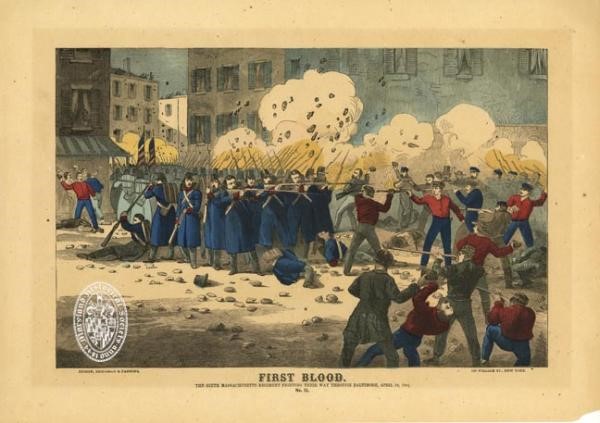
|
My shirt is ragged and my pants are tore.
I ain’t found nothin’ I’m a-looking for,
And I want to go back to Baltimore….
Good old Baltimore.”— lyrics from a country song recorded in 1954 by Sonny James
In 1910, when visitors would come to call on Confederate Veteran George Watts, he would “[rise] from a rickety chair” and receive them with a “sweeping” bow.[i] “Old Man Watts, the [house] painter,” as he was known, was the embodiment of that Baltimore, that old Maryland, which Alabama native and wife of F. Scott Fitzgerald, Zelda Fitzgerald, described as “very polite.” That Baltimore was regarded as a Southern city by most Americans. And Baltimoreans themselves until more recently did not consider their city Mid-Atlantic or Northern. The Baltimore American advertised itself as The Daily Newspaper of the South; the Hotel Rennert, its bar and lounge the haunt of –some would say[ii]—Baltimore’s most famous resident, H. L. Mencken, boasted that it was The Palace of the South. Still taking pride in its heritage in the late forties, Baltimore raised a monument to memorialize Lee and Jackson’s last meeting. And, as late as the era of hula hoops and rock n roll, the town had not completely lost its Southern ways and manners. A buyer for a dress shop who traveled to the city frequently in the fifties recalled that it was charmingly rundown, slow-paced and “friendly.” But that “amiable” and soft-spoken old port that Francis Beirne, a Virginian, wrote about in 1951 would soon be gone.
More @ The Abbeville Institute

Baltimore was not typical due to the "Yankee" influences of the railroads, shipping and manufacturing. After those moved on, there wasn't much left to sustain the city and its population.
ReplyDeleteThanks.
DeleteOld Baltimoron here-
ReplyDeleteThe Mass. Regiment was being shipped south by rail through Baltimore; that rail ended in the city on the east side. They had to disembark, and march west to the rail head to go further south. Along the way, Baltimore locals tried to stop them with bricks, knives, etc. Known locally as the Pratt St. Riot. (Pratt St. running east west along the top of the inner harbor).
I believe Baltimore's southern sympathies lied partially in economics - it was the largest southern most deepwater port and much of the souths cotton trade with Europe flowed through the port.
Anyway, I enjoy your site.
Thank you, Sir.
Delete